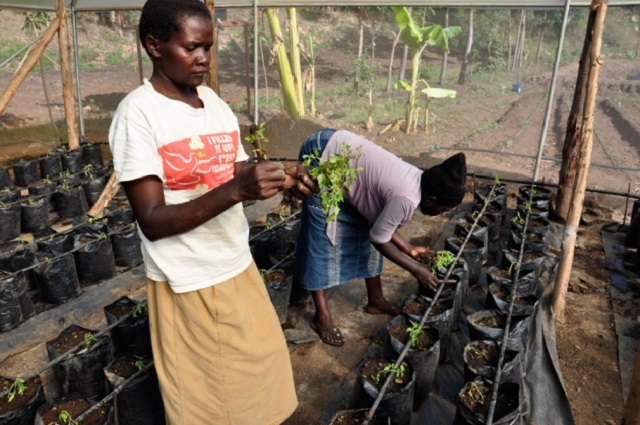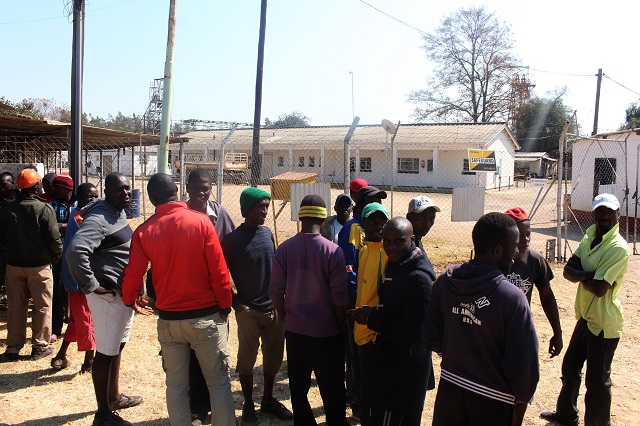Land resettlement still unresolved 36yrs later

Saul Gwakuba Ndlovu
A Zimbabwean parliamentary committee is currently touring the country sounding public opinion on the national land resettlement programme which was launched shortly after the attainment of independence in 1980, but much more vigorously in 2000 up to now.
The resettlement programme is meant to fulfil Zimbabwe’s national objective to reclaim the land and give it back to the masses to whom it rightfully belongs.
A large number of people has already been resettled in various categories of our land. A larger number awaits resettlement as the programme is still in progress.
Comments have been made by a number of people about how well or badly the programme is being carried out. Allegations have been made about corruption, both political and traditional.
In addition to all that, suggestions about how to improve the process have also been made so as to reduce or eliminate corruption and inefficient administrative measures pertaining to the programme.
The ZRP needs to be involved much more actively to deal with corruption than it has been up to now.
Zimbabwe has 10 administrative provinces: Manicaland, Mashonaland East, Harare, Masvingo, Bulawayo, Midlands, Mashonaland Central, Mashonaland West, Matabeleland North and Matabeleland South.
Harare and Bulawayo are metropolitan provinces but the rest are rural and comprise districts in which there are areas under traditional hereditary chiefs, headmen and village heads (bosebhuku).
Although urbanisation is occurring at a fast rate in Zimbabwe as is the case in all so – called Third World countries, a larger number of people still live in the rural areas than in urban centres.
That should mean that the land resettlement exercise affects those in the rural areas more than the urban area residents.
Rural areas comprise communal lands (formerly called “Native Reserves,” later “Tribal Trust Lands” (TTLs), commercial farming (including native purchase areas) and national land and game reserves.
The resettlement programme has affected the commercial farming area almost exclusively for obvious historical reasons as that is land that was forcefully grabbed from the black people by the European colonial settlers, blacks being dumped on what are now known as communal lands.
It is called communal land because it is owned communally as opposed to commercial farms and native purchase areas for which there is private ownership legalised by title deeds.
The resettlement programme is directed from the relevant ministry in Harare right from the first stage of identification of the land to the identification of the beneficiary.
In some cases, local leadership is involved. In such cases the resettled land becomes a part of a neighbouring communal land, and by that measure it is integrated into the appropriate chiefdom.
There is certainly nothing wrong about that, provided historically the newly resettled land was under the same chieftainship. It is very important, therefore, for the Government to make sure that it does not make the mistake of giving land that was under, say Chief Malaba, Chief Chiweshe or Chief Nekatambe before it was grabbed by Cecil John Rhodes’ administration or its successors and hand it over to a different neighbouring chief following its resettlement.
To avoid such an error, it is vital to involve appropriate local chiefs, headmen and village heads in the resettlement programme. If not, the possibility of resetting people in regions, or localities that are either culturally or ecologically inappropriate is very high.
There is also the possibility of bringing people from a faraway locality and resettling them on a former commercial farm which is next to an over populated communal land.
The local people feel hard done to see land that they thought would benefit them being utilised for people from other chiefdoms or regions.
That may cause tension most unnecessarily, and should be avoided at all cost by directly and actively involving local traditional leaders of the lands near where resettlement is planned.
The core duty of every traditional leader, from village heads, to chiefs is to administer first and foremost, the land under them.
That means resettling people, giving them arable land for schools, clinics, hospitals, dipping tanks, sports grounds, churches as well as land for commercial and industrial purposes.
That should be done in consultation with the district administrators and the district councils, of course. We should always bear in mind that every Zimbabwean locality would like to enjoy the practical benefits of the country’s political independence.
Those benefits are in the form of power and space. Power is carried and exercised by the local traditional, council and administrative authorities.
Space refers to the land and its numerous resources, the air above that land, and the water in, on and adjacent to that land.
We can add a third factor, opportunities. However, opportunities are, in effect, an extension of both power and space in that they are created by policy -makers and involve the exploitation or utilisation of land or air or water – based resources.
Be that as it may, every community wishes to be involved in the utilisation of its resources, and to benefit from and by whatever opportunities that may be created by policy – generators or by natural factors such as the weather.
Traditional leaders represent every member of their respective communities irrespective of their political or cultural (religious) affiliation, that is to say, of either the leaders themselves or of the community members as individuals.
That is an advantage in their role as arbitrators or as keepers of traditional values, natural resources and the security of their respective territories.
All this indicates that traditional leaders do have an inalienable part to play in the resettlement of the people of Zimbabwe not only because they own the land in trust for their communities but also because they are the de jure administrators (in cultural and traditional terms) of their territories.
It is not without legal and legitimate justification that many large tracts of land are called by the names of chiefs: kaBango, kwaChiweshe, kwaMarange, kwaZimunya, kaManguba, koKhumalo, kaMadlambudzi, kaMasendu, koMzimuni, kwaMakoni, kwaMutasa and so on and so forth.
To leave out traditional leaders from the land resettlement process is to exclude sources of vital information about those who are to be resettled, and about the land to be resettled.
It also renders traditional leaders irrelevant to the lives of the people in their areas. If it is not unconstitutional at worst, it is uncustomary at least and would be against the cultural norms and practices of land tenure and usage in Zimbabwe.
Saul Gwakuba Ndlovu is a retired, Bulawayo – based journalist. He can be contacted on cell 0734 328 136 or through email. [email protected]








Comments